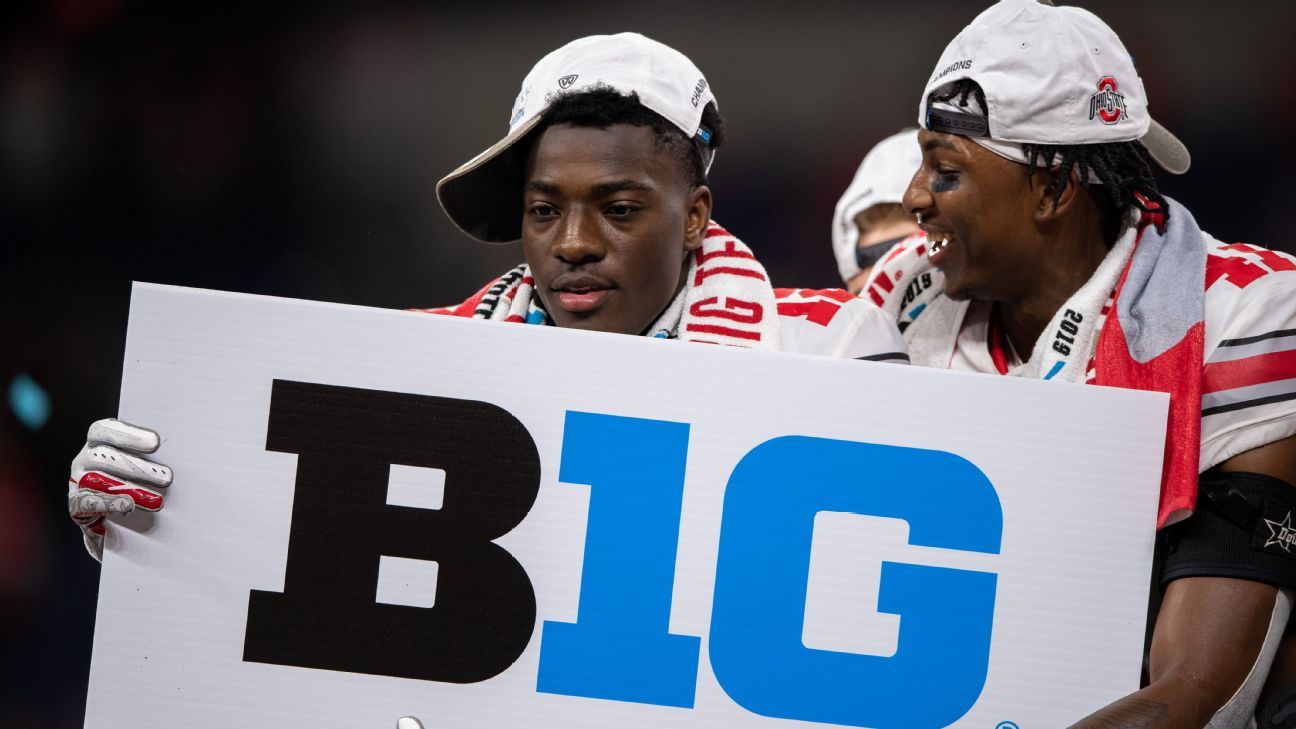After what may have been the ugliest, most controversial month in league history, Big Ten college football is back. The conference presidents and chancellors on Wednesday voted to start their season the weekend of Oct. 24 after considering new medical information and testing possibilities presented to them this past weekend.
Here’s a look at what went into the decision, and what’s still to come out of it:
What was the most important factor in the Big Ten voting to play?
The medical information and resources around COVID-19 improved significantly, especially the availability of rapid testing programs. Big Ten teams had several outbreaks during the summer, and contact tracing had been a significant obstacle without rapid testing in place. Many wondered how schools such as Rutgers, Northwestern, Illinois and Maryland would ever get around their state restrictions to practice in pads and eventually play. The emergence of several reliable rapid-testing options eased concerns about contact tracing, and increased confidence about having minimal interruptions during the regular season, which can’t afford too many bumps if the Big Ten wants to be part of the College Football Playoff.
What happened in the meetings and how was the vote decided?
The conversations began in earnest Saturday, with a medical presentation to a steering committee comprised of eight presidents and chancellors. That group served as a buffer, and was impressed enough that it called a full board meeting with all 14 presidents and chancellors Sunday.
The marathon meeting Sunday, which included a three-part presentation from each of the Big Ten’s return to competition task force subcommittees, was again focused on the updated medical information, as the league had cited medical reasons for its initial postponement. The medical subcommittee presented at least four new rapid-testing options and how the developments will ease some of the challenges around contact tracing. Presidents and chancellors also heard about the potential football schedule and how it will work with the Big Ten’s television agreement. A start date during the weekend of Oct. 17 was discussed before deciding on the weekend of Oct. 24.
Could some Big Ten teams still not play this fall?
All 14 Big Ten teams will attempt to play this fall. The developments around rapid testing have eased concerns of schools in areas with more restrictions around contact and gatherings. Wisconsin last week announced a two-week pause for all football activities, but the break is set to end next week, and athletic director Barry Alvarez and coach Paul Chryst think the team needs only three additional weeks to be ready for competition. Maryland, which paused activities Sept. 3, resumed practices in football late last week.
During a news conference Monday, Wisconsin chancellor Rebecca Blank said all of the schools were going to “move together.”
“We’re all going to play or not if we possibly can,” she said. “This isn’t going to be a school-by-school thing.”
Could the Big Ten be ready in time for the College Football Playoff?
With a late October start date, the Big Ten can still finish its season and crown a champion in time to be considered for a semifinal spot, but it has to be approved by the playoff’s management committee. All 10 of the FBS commissioners and Notre Dame athletic director Jack Swarbrick would determine whether the Big Ten can rejoin the CFP. ACC commissioner John Swofford, SEC commissioner Greg Sankey and Big 12 commissioner Bob Bowlsby will carry the most weight in the room, as they will have navigated their leagues through longer schedules. It would be difficult for them to say no, but they also probably won’t be thrilled with the Big Ten playing a shortened season.
What does this mean for the Pac-12?
The Pac-12 remains on a later timeline to potentially kick off its fall season, mainly because of local regulations in California (four teams) and Oregon (two teams). Half the conference still has not been cleared by public health officials to resume contact practices, let alone games. The league’s presidents and chancellors wouldn’t consider a vote to return until that status changes.
The league already has an agreement for rapid testing with Quidel Corporation, and hopes to have equipment in place by the end of the month. Sources say a mid-November start is likely the earliest the Pac-12 could get on the field, presuming the local regulation hurdles are cleared.
While the new testing systems will be on every campus by the end of the month, the league still expects to need a short time to train staff how to use them, and ensure the proper testing protocols are in place. Ideally, the Pac-12 would like its teams to have six weeks to practice and physically prepare for the season, the source said.
Pac-12 commissioner Larry Scott has said he has spoken to Big Ten commissioner Kevin Warren with the hopes they could align their return, but conceded it “may or may not work out.” The more likely scenario considering the Big Ten’s news is the Pac-12 operates on its own timeline, and eventually concedes it’s out of the playoff this year.
“At this time, our universities in California and Oregon do not have approval from state or local public health officials to start contact practice,” Scott said in a statement. “We are hopeful that our new daily testing capability can help satisfy public health official approvals in California and Oregon to begin contact practice and competition. We are equally closely monitoring the devastating fires and air quality in our region at this time. We are eager for our student-athletes to have the opportunity to play this season, as soon as it can be done safely and in accordance with public health authority approvals.
2:00
Paul Finebaum reacts to the news that the Big Ten has decided to start its football season in October.
Who were the key figures in getting the Big Ten back on the field?
Although outside pressure certainly was a factor, the Big Ten’s presidents and chancellors ultimately needed greater assurances from the league’s doctors and experts in infectious diseases and sports medicine. Ohio State lead team physician Dr. Jim Borchers, who co-chaired the medical subcommittee on the return to competition task force, emerged as an influential voice to ease the presidents’ initial concerns. Sources said Ohio State, along with Nebraska and a few other schools, were most vocal about playing a fall season.


